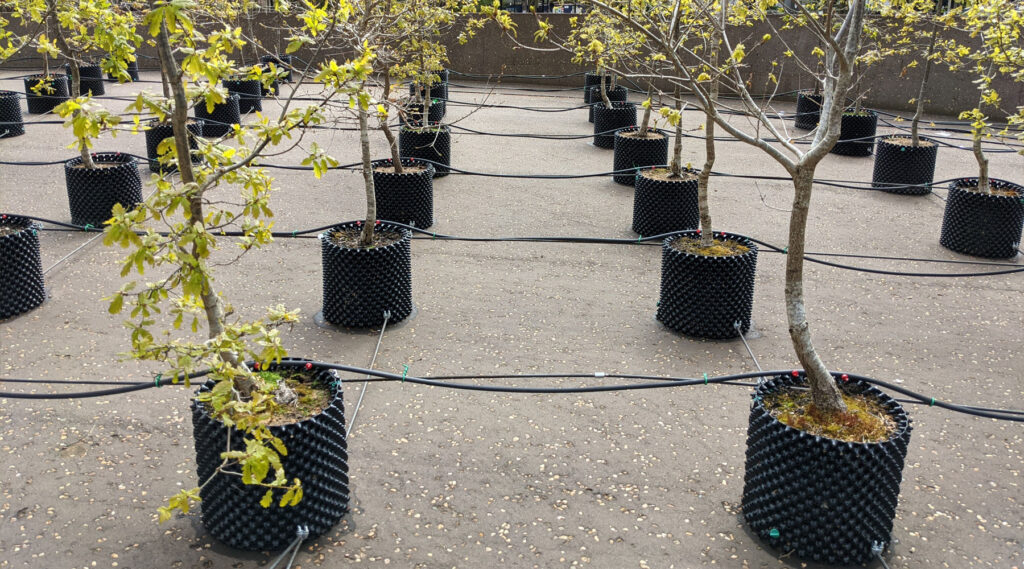On an empty concrete terrace at the back of the Tate is a cluster of trees, and while it looks like a sad transplant from a garden centre, it’s actually art.
Supposedly a “response to the climate emergency” by the artists Ackroyd & Harvey, each tree was grown from an acorn harvested from a forest of 7,000 oaks planted in Germany in the 1980s as an urban greening project.
These 100 young trees have been placed here next to the Tate as art.
However, unless you knew it was art, you’d just assume this was a cluster of trees waiting to be sold at the local garden centre. It’s beyond bland as a display.
It’s supposed to be environmental, and eco-friendly, but it’s ended up looking like a dystopian future where the earth has been blasted into a desiccated landscape and the only way plants can survive is if placed in protective pots above the wasted land and fed precious water dripping from a network of thin pipes.
A rich man’s paradise in the future where a small cluster of precious trees are clustered together in a pallid impression of the forests that are now a long-forgotten memory.
In a way, that is an environmental message, that the earth can be destroyed and we should protect what we have, but it’s very different from the message the artists were trying to send.
I have never seen a cluster of trees looking so utterly depressing.
The display, Beuys’ Acorns is at the back of the Tate Modern until 14th November.
Exhibition Rating
Tate Modern
Bankside, London
SE1 9TG










It is my experience that landscape type art installations rarely work, despite perhaps much good intention. Given that the trees are in relatively small pots on a hard surface, this one will likely move on soon.
Is the idea of the Tate to have a location for such types of art installations that change annually, akin to the fourth plinth at Trafalgar Square?
Far better to inspire the integration of art in the midst of a natural environment as the Art-in-Nature Arboretum Trust does here at the Sculpture Park at Waitakaruru Arboretum here in NZ. The Trust supports artists who have a story to tell within the landscape.
You of course are allowed your opinion. Bit harsh i think in a, not my taste therefore has no value.
The trees could look happier, increased Carbon dioxide levels are the sort of thing trees and all plants love.
Where will the trees be after this?
Seeing the oaks yesterday nearly two months on from your original post, your comments could be interpreted as a little harsh. Oaks come into full leaf later than most trees and in early May when you saw them they had a way to go. They are now far more lush and I thought they looked good. Obviously this is not a permanent installation – seven of the oaks are to be planted locally – and its position is very deliberate: directly above Beuys’s related installation of basalt sets in one of the tank rooms below. And whatever one’s feelings about these oaks, they are proving as intended by Ackroyd & Harvey to be “a catalyst for conversations and research into current environmental issues”. Look up Miyawaki forests, for instance. There’s an interesting article in the current Economist about these small urban forests being planted on derelict urban land and which directly connect with Beuys’s original 7000 Oaks.
My review was correct at the time it was written.